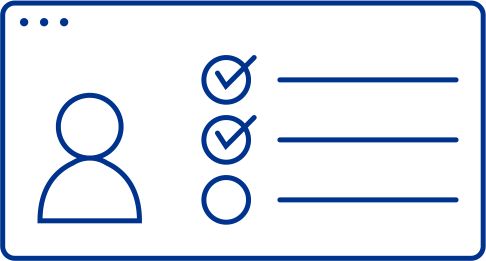Publication of the first two IFRS庐 Sustainability Disclosure Standards was a key milestone in the International Sustainability Standards Board (ISSB)鈥檚 vision 鈥� to create a global baseline for investor-focused sustainability reporting that local jurisdictions can build on.
The Australian Government has determined that the IFRS Sustainability Disclosure Standards will form the baseline for sustainability reporting in Australia and legislation to give effect to this, applicable to certain entities from 1 January 2025.
Sustainability reporting in Australia: May 2025 update
The fourth in our series of webinars on the evolution of global and Australian sustainability standards was held on 6 May 2025. We discussed and provided an update on the first Australian Sustainability Reporting Standards (ASRS), specifically AASB S2 Climate-related disclosures (AASB S2) and the now finalised assurance requirements issued by the Auditing and Assurance Standards Board (AUASB). Importantly, we discussed recent activities being undertaken by our clients and where we are seeing implementation challenges.
Sustainability reporting timelines for eligible Australian entities
Where an entity is required to prepare a financial report under Chapter 2M of the Corporations Act 2001, it will be in scope to prepare a sustainability report as follows:
1 January 2025
Group 1
First annual reporting periods beginning on or after 1 January 2025
Meet two of the three reporting thresholds:
- $500 million or more
Consolidated gross revenue - $1 billion or more
Consolidated assets - >500 Employees
OR
NGER Reporters: Above NGER1 publication threshold
OR
Asset Owners: Scoped out of Group 1
1 July 2026
Group 2
First annual reporting periods beginning on or after 1 July 2026
Meet two of the three reporting thresholds:
- $200 million or more
Consolidated gross revenue - $500 million or more
Consolidated assets - >250 Employees
OR
NGER Reporters: All other NGER reporters
OR
Asset Owners: $5 billion or more value of assets
1 July 2027
Group 3
First annual reporting periods beginning on or after 1 July 2027
Meet two of the three reporting thresholds:
- $50 million or more
Consolidated gross revenue - $25 million or more
Consolidated assets - >100 Employees
1. National Greenhouse and Energy Reporting Scheme
Watch the webinar
Previous webinars
We looked at the first Australian Sustainability Reporting Standards (AASB S1 and AASB S2), provided an update on assurance activities, and reflected on key lessons learned to date.
We outlined the key implications of Treasury鈥檚 Final Policy position for climate-related disclosures, which came out in January 2024 prior to the passage of legislation through Parliament, and shared key observations forming the work we are doing with our clients who are leaning into the practical aspects of preparing for the upcoming climate focused legislation in Australia.
If you are interested in receiving the recording for this webinar, please contact one of 乐鱼(Leyu)体育官网's climate change & sustainability specialists.
We shared an overview of the developments in international sustainability reporting standards, including an introduction to the first two ISSB Sustainability Disclosure Standards, discussed the implications of the Treasury proposals for Australian entities, and proposed a roadmap of activities to consider as you prepare to report.
If you are interested in receiving the recording for this webinar, please contact one of 乐鱼(Leyu)体育官网's climate change & sustainability specialists.
乐鱼(Leyu)体育官网's climate change & sustainability specialists
To find out how 乐鱼(Leyu)体育官网 can help you fulfil your mandatory climate-related reporting obligations, contact us.
Frequently asked questions
- In March 2025, ASIC published Regulatory Guide 280 Sustainability Reporting to support the implementation of the mandatory climate-related disclosures regime. Read our article to find out more.
- In January 2025, Treasury released a consultation draft bill proposing to extend the transitional modified liability settings for both directors and auditors to certain voluntary sustainability reports.
- In January 2025, the AUASB approved both the Australian standard on sustainability assurance and the assurance phasing model.
In their January 2025 meeting, the ISSB proposed a set of narrow-scope amendments to simplify IFRS S2 Climate-related Disclosures. The proposed amendments would be particularly relevant for companies with insurance or investment banking activities. They would also be of interest to companies that are currently planning their implementation or have already conducted a gap assessment. Read our article to find out more.
- Reporting entities: Those with Corporations Act 2001 Chapter 2M reporting obligations meeting prescribed thresholds.
- Phasing: The first sustainability report will be issued for annual reporting periods starting 1 January 2025 (or 31 December 2025 year-end). First mandatory reporting date for 30 June year ends will be 30 June 2026. The timing of first reporting by in-scope entities is based on size or level of emissions.
- Reporting content: As required by ASRS, as well as information derived from climate scenario analysis carried out using at least two specified scenarios.
- Reporting framework: Within a sustainability report in the annual report and lodged in accordance with current annual reporting requirements.
- Assurance requirements: Phased approach ending with reasonable assurance of all climate-related financial disclosures made from years beginning 1 July 2030.
- Liability framework: Modified liability approach for both directors and auditors to disclosures of Scope 3 emissions, scenario analysis, transition plans and climate-related forward-looking statements.
- Scope: AASB S1 is a voluntary standard on general requirements for sustainability-related financial information while AASB S2 is a mandatory standard on climate reporting in line with the approved Climate-related disclosures legislation.
- Application: AASB S1 and AASB S2 apply to both for-profit and not-for-profit entities.
- AASB S1: Apart from being a voluntary standard, no differences. Incorporates all IFRS S1 General Requirements for Disclosure of Sustainability-related Financial Information requirements without modification.
- AASB S2: Incorporates selected content from AASB S1 (general requirements for disclosure) necessary to make AASB S2 function as the standalone standard for all climate-related financial disclosures. That content is included in Appendix D.
- AASB S2: No requirement to consider or disclose industry-based metrics or the Sustainability Accounting Standards Board (SASB) Standards.
The climate disclosures contained in the sustainability report will be subject to similar assurance requirements to those currently in the Corporations Act 2001 for financial reports.
In January 2025, the AUASB approved:
- Australian Standard on Sustainability Assurance (ASSA) 5010 Timeline for Audits and Reviews of Information in Sustainability Reports Under the Corporations Act 2001 outlining the assurance phasing model. The assurance phasing model aligns with the requirement in the Act for an 鈥榚nd state鈥� of reasonable assurance of all climate disclosures made from years commencing 1 July 2030 onwards. The final phasing model requires only limited or reasonable assurance in any one year.
- ASSA 5000 General Requirements for Sustainability Assurance Engagements built on ISSA 5000 with differences limited to 鈥淎ustralianised鈥� certain terms. ASSA 5000 is effective for assurance engagements on sustainability information reported for periods beginning on or after 1 January 2025 with earlier adoption permitted.
ASIC is the regulator responsible for administering the mandatory climate-related disclosures regime. In March 2025, ASIC published Regulatory Guide (RG) 280 Sustainability Reporting to support in the implementation of the new regime. The RG provides guidance and addresses ASIC's approach to relief from the obligations, and interaction of the regime with existing legal and regulatory requirements. ASIC has further advised that in the early stages it will take a pragmatic approach to the supervision and enforcement of the regime.
ASIC also provides resources on its website for preparers and users of sustainability reports.
- Get familiar with the Australian sustainability reporting framework now in place.
- Understand when the reporting requirements apply to you.
- Start planning 鈥� perform a gap analysis and create a roadmap to identify capacity constraints.
- Reach out to your 乐鱼(Leyu)体育官网 contact during your planning process.
- Be alert for guidance and relief issued by ASIC.
For our latest insights and guidance visit 乐鱼(Leyu)体育官网 International's ISSB Standards Today.






